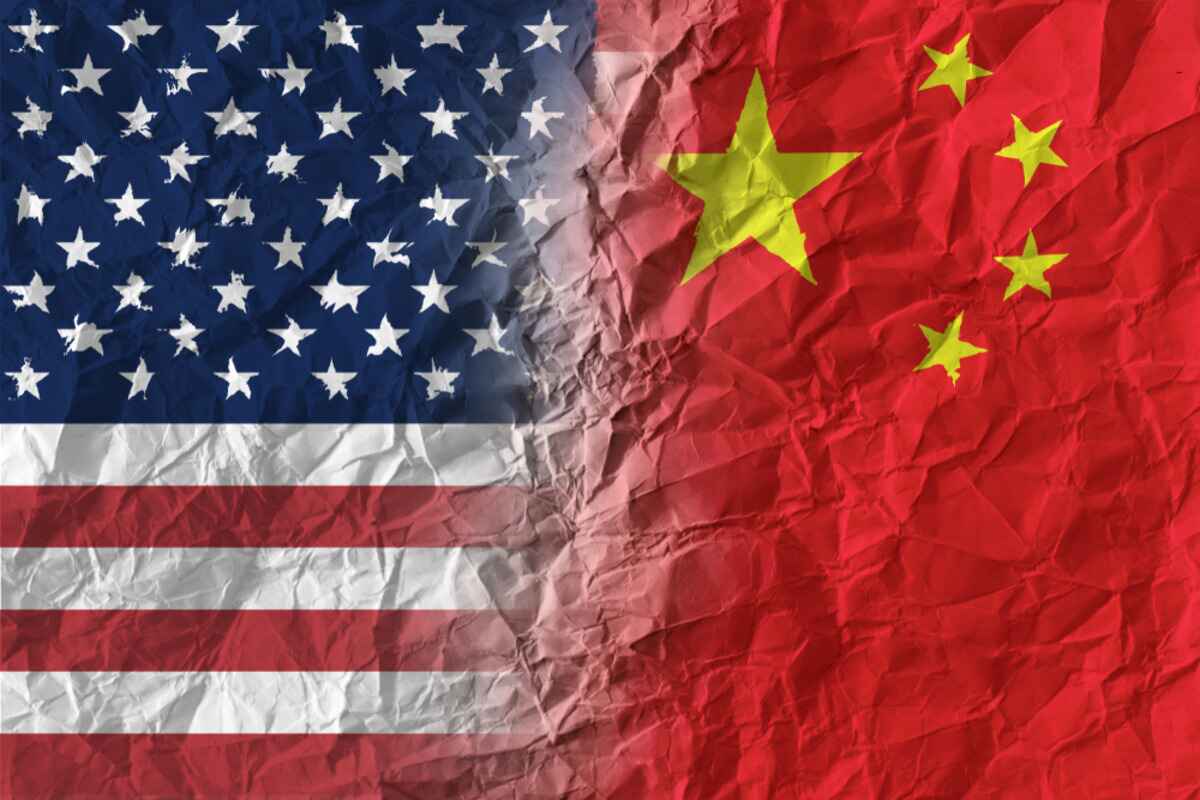U.S. President Donald Trump has issued a stark warning to China, threatening an additional 50 percent tariff on goods imported into the United States if it does not retract its 34 percent counter-tariff, as global markets continue to experience significant declines.
Beijing responded on Sunday, following last week’s announcement from Trump, who imposed a 34 percent tax on Chinese imports as part of his “Liberation Day” initiative, which established a minimum 10 percent levy on nearly all of America’s trading partners.
In a recent post on social media, Trump provided China with a deadline until Tuesday to eliminate its countermeasure or face the substantial 50 percent tax.
In reaction, the Chinese embassy in the U.S. accused Washington of “economic bullying” and asserted that Beijing “will firmly safeguard its legitimate rights and interests.” If Trump proceeds with his threat, U.S. companies could be confronted with an astonishing total rate of 104 percent on Chinese imports, as this would be layered on top of the existing 20 percent tariffs implemented in March and the 34 percent introduced last week.
Fears of a deepening trade war
There are growing concerns that this escalating situation could exacerbate a trade war between the world’s two largest economies and global rivals. In his post on Truth Social, Trump also declared that “all talks with China concerning their requested meetings with us [on tariffs] will be terminated!”
Additionally, on Monday, the U.S. president stated he was not contemplating a halt on global import tariffs to facilitate negotiations with other countries. “We’re not looking at that. We have many, many countries that are coming to negotiate deals with us, and there are going to be fair deals,” he affirmed.
Trump emphasized that China had enacted its countermeasure “despite my warning that any country that retaliates against the U.S. by issuing additional tariffs… will be immediately met with new and substantially higher tariffs.”
Beijing’s response to threats
Beijing countered, asserting that “pressuring or threatening China is not a right way to engage.” Speaking from the White House, the U.S. president indicated that there could be both permanent tariffs and ongoing negotiations. “We have $36 trillion debt for a reason,” he noted, adding that the U.S. would be in discussions with China and other nations to secure a “fair deal and a good deal.”
“It’s now America first,” Trump proclaimed.
Implications for China’s manufacturing sector
The proposed tariffs would represent a substantial blow to China’s manufacturers, for whom the US remains a crucial market for exports. China’s leading exports to the US include electrical products and other machinery, computers, furniture, toys, vehicles, and equipment. The US’s top exports to China comprise oilseeds and grains, as well as aircraft, machinery, and pharmaceuticals.
Read more | Stock market downturn: Asia reacts to Trump’s tariff plans, recession fears
Market reactions to tariff uncertainty
The uncertainty surrounding the tariffs has triggered a turbulent day on global stock markets. Markets worldwide have plummeted since Trump announced the global tariffs. The value of U.S. stock markets fell sharply again upon opening on Monday, while Europe’s major markets, including London’s FTSE 100, closed down by more than 4 percent.
Asian share indexes experienced a steep decline on Monday, with Hong Kong’s Hang Seng index dropping over 13 percent, marking its largest one-day fall since 1997. However, most markets showed a slight correction on Tuesday, with many bourses opening higher.
The ramifications of these developments on the FTSE 100, America’s S&P 500, Germany’s Dax, and Japan’s Nikkei have been extensive, highlighting the interconnectedness of global trade and economic stability.








